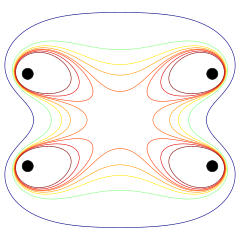Please let me describe what I am trying to achieve and I will pose my question in the end.
I am trying to design a small chamber which can have a uniform magnetic field inside. I want to see if a design using permanent block magnets is feasible in terms of cost and construction. The volume inside the chamber is approximately 13cm x 13cm x 13cm.
I am thinking of using an iron or steel yoke as shown in the picture below. I got the idea from this article in supermagnete.de.
The picture below shows a top-view of my current design, where the green is a block magnet and the gray is iron or steel:

To reduce construction costs, I am planning to laser-cut many pieces and stack them as shown below:

This is an experimental prototype design, in which I care more about the field homogeneity rather than the field strength itself.
My question is the following: Would such a construction produce a fairly homogeneous field? I am concerned that the size of the magnet and the geometry of certain areas of the sheet matter, but I am not entirely sure how to design for them.
Given the technical details of the magnets, for example this datasheet, how can I estimate the field strength inside the chamber?
With that in mind, is there any free software that can easily simulate the fields in such a geometry? I could use that to see the effect of different geometries and magnets.
Thanks for all the help in advance!







